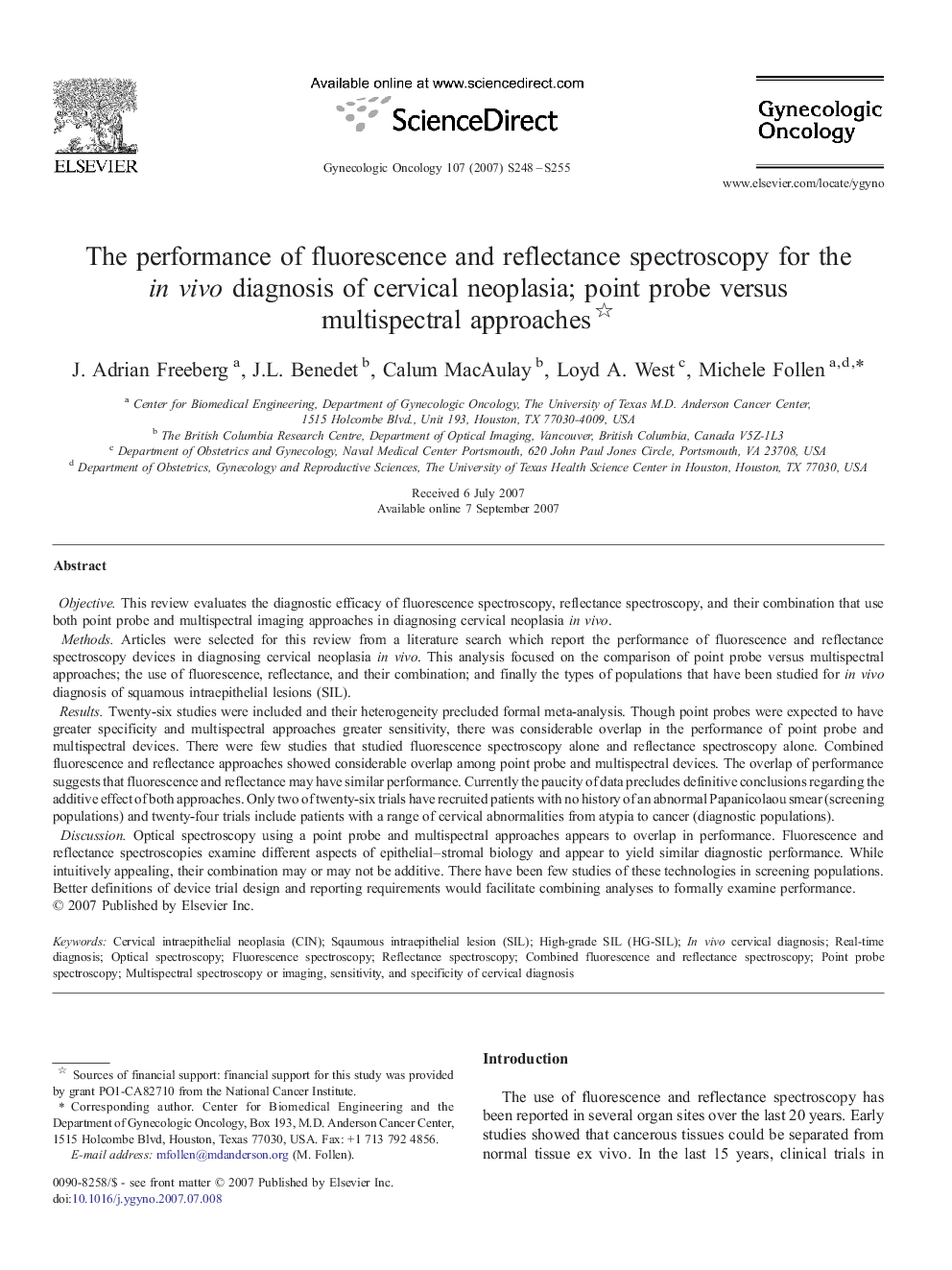| Article ID | Journal | Published Year | Pages | File Type |
|---|---|---|---|---|
| 3946334 | Gynecologic Oncology | 2007 | 8 Pages |
ObjectiveThis review evaluates the diagnostic efficacy of fluorescence spectroscopy, reflectance spectroscopy, and their combination that use both point probe and multispectral imaging approaches in diagnosing cervical neoplasia in vivo.MethodsArticles were selected for this review from a literature search which report the performance of fluorescence and reflectance spectroscopy devices in diagnosing cervical neoplasia in vivo. This analysis focused on the comparison of point probe versus multispectral approaches; the use of fluorescence, reflectance, and their combination; and finally the types of populations that have been studied for in vivo diagnosis of squamous intraepithelial lesions (SIL).ResultsTwenty-six studies were included and their heterogeneity precluded formal meta-analysis. Though point probes were expected to have greater specificity and multispectral approaches greater sensitivity, there was considerable overlap in the performance of point probe and multispectral devices. There were few studies that studied fluorescence spectroscopy alone and reflectance spectroscopy alone. Combined fluorescence and reflectance approaches showed considerable overlap among point probe and multispectral devices. The overlap of performance suggests that fluorescence and reflectance may have similar performance. Currently the paucity of data precludes definitive conclusions regarding the additive effect of both approaches. Only two of twenty-six trials have recruited patients with no history of an abnormal Papanicolaou smear (screening populations) and twenty-four trials include patients with a range of cervical abnormalities from atypia to cancer (diagnostic populations).DiscussionOptical spectroscopy using a point probe and multispectral approaches appears to overlap in performance. Fluorescence and reflectance spectroscopies examine different aspects of epithelial–stromal biology and appear to yield similar diagnostic performance. While intuitively appealing, their combination may or may not be additive. There have been few studies of these technologies in screening populations. Better definitions of device trial design and reporting requirements would facilitate combining analyses to formally examine performance.
